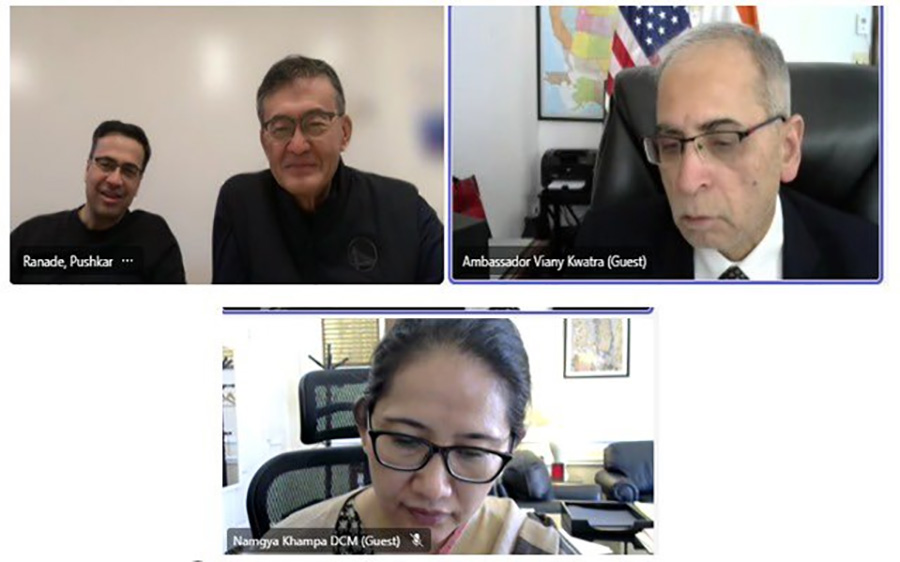Breaking News

India’s Ambassador to the United States, Vinay Mohan Kwatra, held discussions with Intel CEO Lip Bu Tan on the company’s plans to expand its semiconductor and artificial intelligence (AI) operations in India, as part of New Delhi’s broader strategy to build a self-reliant, high-tech manufacturing and innovation ecosystem.
The virtual meeting, held earlier this week, focused on Intel’s potential participation in India’s Semiconductor Mission and the IndiaAI Mission, two cornerstone national programs designed to accelerate India’s role in global chipmaking and AI development.
The talks come at a crucial moment as India fast-tracks its semiconductor ecosystem under the India Semiconductor Mission (ISM) — launched in 2021 with an outlay of ₹76,000 crore to boost domestic chip design, fabrication, and manufacturing capabilities. According to the government’s Press Information Bureau, India inaugurated its first 3-nanometer chip design centres in Noida and Bengaluru in 2025, and five semiconductor production units are currently under construction across the country.
The push for semiconductor independence is central to India’s industrial policy goals amid rising geopolitical competition in global supply chains. Global majors like Intel, Micron, and AMD have shown growing interest in aligning with India’s production-linked incentive (PLI) frameworks and talent-rich R&D environment.
The virtual meeting, held earlier this week, focused on Intel’s potential participation in India’s Semiconductor Mission and the IndiaAI Mission, two cornerstone national programs designed to accelerate India’s role in global chipmaking and AI development.
The talks come at a crucial moment as India fast-tracks its semiconductor ecosystem under the India Semiconductor Mission (ISM) — launched in 2021 with an outlay of ₹76,000 crore to boost domestic chip design, fabrication, and manufacturing capabilities. According to the government’s Press Information Bureau, India inaugurated its first 3-nanometer chip design centres in Noida and Bengaluru in 2025, and five semiconductor production units are currently under construction across the country.
The push for semiconductor independence is central to India’s industrial policy goals amid rising geopolitical competition in global supply chains. Global majors like Intel, Micron, and AMD have shown growing interest in aligning with India’s production-linked incentive (PLI) frameworks and talent-rich R&D environment.

Complementing these efforts, the IndiaAI Mission, approved by the Union Cabinet in 2024 with an outlay of ₹10,371.92 crore, aims to promote the vision of “Making AI in India and Making AI Work for India.” The initiative seeks to expand India’s compute capacity, strengthen research, and support AI-driven startups.
Under the Mission, India’s national GPU capacity has increased nearly fourfold — from 10,000 to 38,000 GPUs — to ensure affordable access to high-performance computing resources for innovators and enterprises. The program’s seven pillars include compute infrastructure, AIKosh (India’s AI data repository), application development, AI skilling, startup funding, and responsible AI governance frameworks.
Kwatra’s engagement with Intel underscores India’s ongoing diplomatic and industrial outreach to attract strategic investments from global technology leaders. Officials familiar with the matter said discussions focused on scaling semiconductor R&D and advanced AI development in India through public–private partnerships, while leveraging existing initiatives like Digital India and Startup India.
With both semiconductor fabrication and AI emerging as critical technologies shaping national competitiveness, the dialogue between Intel and Indian policymakers could play a key role in strengthening India’s position as a trusted global technology manufacturing and innovation hub.
See What’s Next in Tech With the Fast Forward Newsletter
SECURITY
Tweets From @varindiamag
Nothing to see here - yet
When they Tweet, their Tweets will show up here.





























